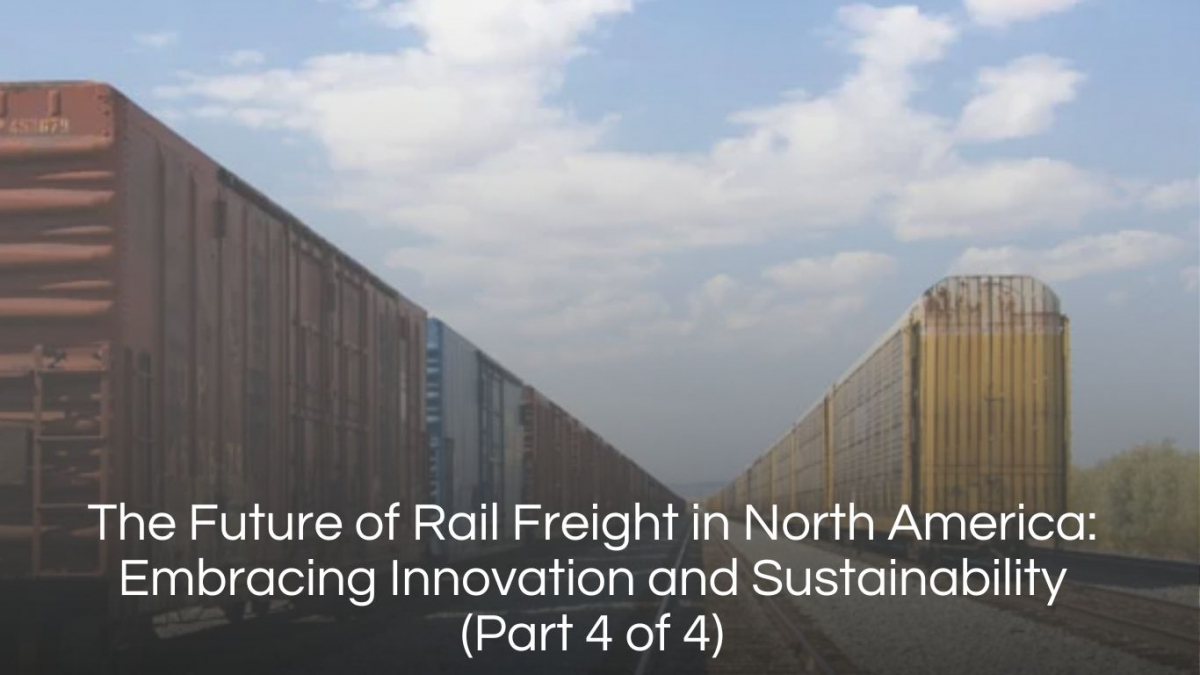Digitalization and Automation:
Digital technologies are revolutionizing rail freight operations in North America. The implementation of Internet of Things (IoT) sensors, data analytics, and artificial intelligence (AI) is optimizing train routing, improving asset management, and enhancing overall operational efficiency. Real-time data enables predictive maintenance, reducing downtime and improving the reliability of freight transportation. Automation is streamlining processes, from cargo handling to rail yard operations, leading to increased productivity and cost savings.
Intermodal Growth and Integration:
Intermodal transportation, which combines rail, trucking, and maritime services, is becoming increasingly vital in the rail freight sector. Railroads, trucking companies, and maritime ports are collaborating to offer seamless and efficient transportation solutions for shippers. This integration provides flexibility and cost savings by leveraging the strengths of each mode of transportation. Rail intermodal terminals are expanding to accommodate the rising demand, enabling smoother cargo transfers and reducing congestion at ports and highways.
Sustainable Practices and Green Initiatives:
The rail freight industry is committed to sustainability and reducing its environmental impact. Renewable energy sources, such as solar and wind power, are being adopted to power rail operations, reducing reliance on fossil fuels. Electrification of locomotives is gaining traction, resulting in lower emissions and improved air quality. Railroads are implementing sustainable operational practices, such as promoting eco-friendly packaging and employing efficient route planning to minimize fuel consumption. These green initiatives align with broader environmental goals and contribute to a greener supply chain.
Infrastructure Investment and Expansion:
Investment in rail infrastructure is crucial to accommodate the future growth of rail freight in North America. Ongoing projects and plans aim to improve rail capacity, enhance connectivity, and reduce bottlenecks. Upgrades to tracks, bridges, and terminals facilitate the movement of larger freight volumes and improve efficiency. High-speed rail corridors are being developed, enabling faster and more reliable transportation of goods. Strategic infrastructure investments strengthen the competitiveness of rail freight and support economic growth.
Collaboration and Partnerships:
Collaboration between railroads, government entities, and private stakeholders is key to driving innovation and overcoming common challenges in the rail freight sector. Public-private partnerships are being formed to foster investment, technological advancements, and regulatory support. By working together, stakeholders can leverage their expertise, resources, and influence to create a more efficient and sustainable rail freight network. Collaboration also extends to integrating rail with other modes of transportation, ensuring a seamless and multimodal logistics system.
The future of rail freight in North America is characterized by transformative changes driven by innovation, sustainability, and collaboration. Embracing digitalization and automation optimizes operations, while intermodal growth and integration provide efficient and flexible transportation solutions. Sustainable practices and green initiatives contribute to a cleaner and greener supply chain. Infrastructure investment and expansion are vital for accommodating future growth. Lastly, collaboration and partnerships foster innovation and address common challenges. By embracing these trends, the rail freight industry will play a pivotal role in shaping the future of logistics and supply chain management in North America.


